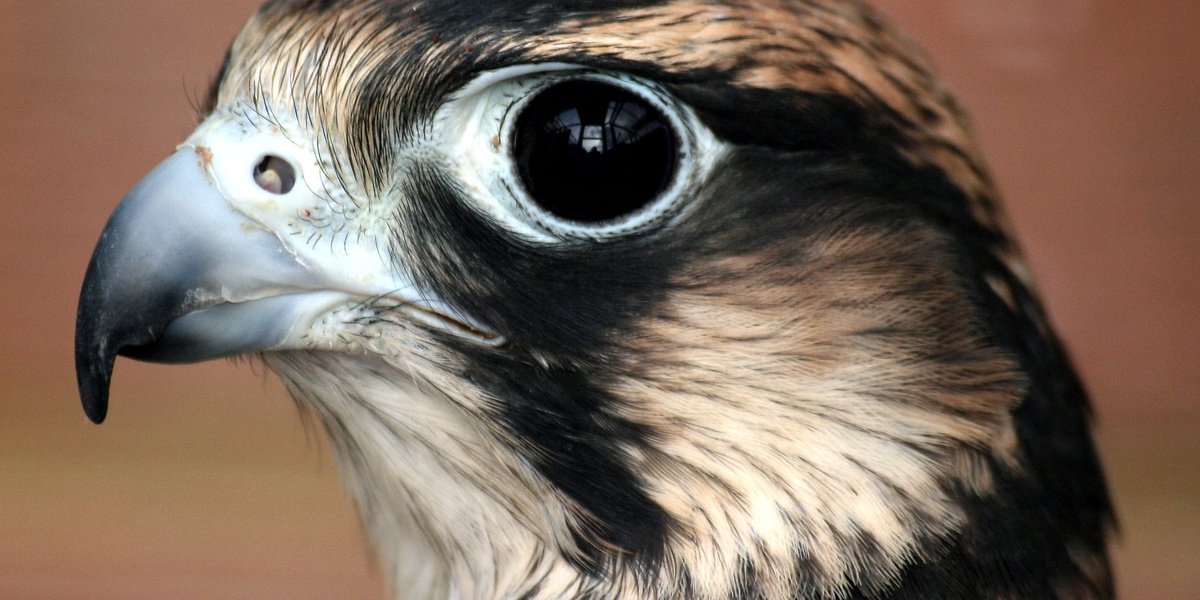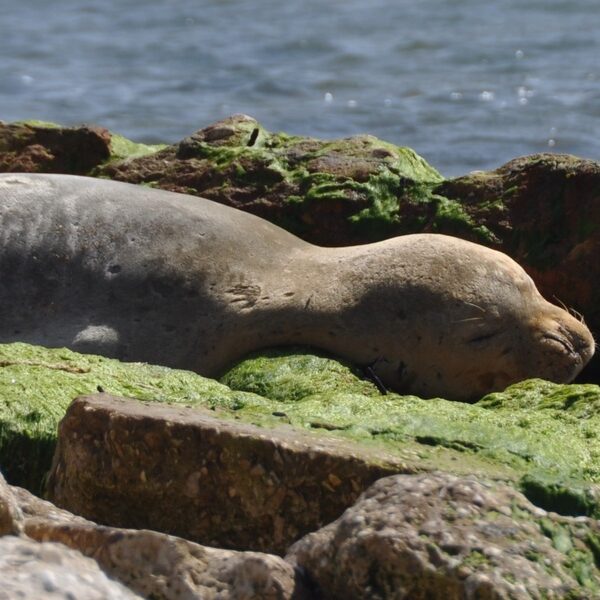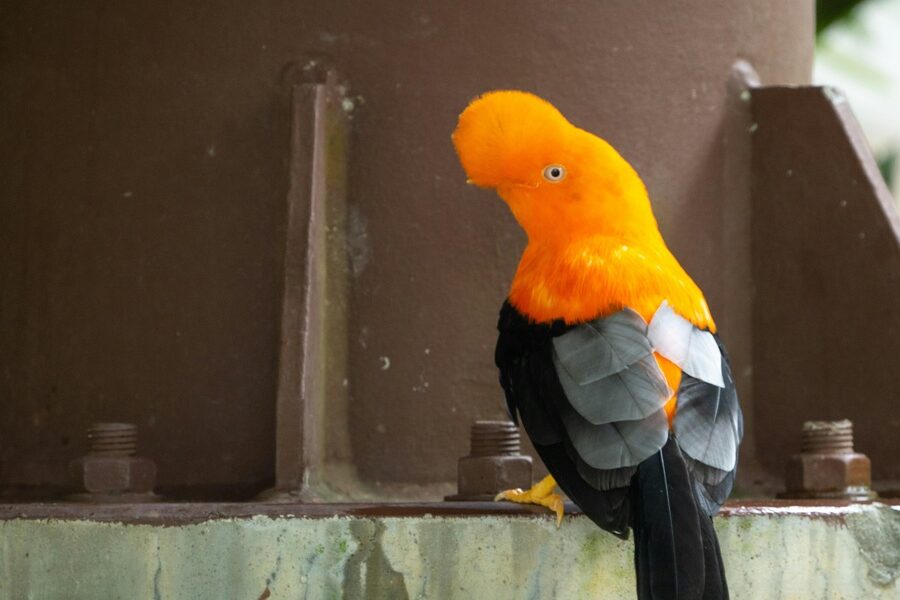Uzbekistan’s varied landscapes — from desert steppe to mountain woodlands and broad river valleys — support a wide range of birdlife. Whether you’re visiting salt lakes in spring or scanning foothill forests, the country offers species that reflect Central Asia’s shifting habitats and migratory routes.
There are 100 Birds of Uzbekistan, ranging from Asian Dowitcher to Yellow-breasted Tit. Each entry lists Scientific name, Residency and Main habitat to make identification and trip planning easier — you’ll find below.
When is the best time to spot migratory species like the Asian Dowitcher?
Spring (March–May) and autumn (August–October) are prime for migrants; shorebirds like the Asian Dowitcher pass through wetlands and river deltas during those windows. Check local wetlands (Amu Darya, Syr Darya, and seasonal lakes) for peak movements and bring a scope for distant flocks.
How should I interpret the “Residency” column in the list?
Residency indicates typical occurrence: resident (year-round), breeding migrant, passage migrant, winter visitor, or rare/vagrant. Use that to plan visits by season, and consult local reports or birding groups for recent confirmations and timing.
Birds of Uzbekistan
| Common name | Scientific name | Residency | Main habitat |
|---|---|---|---|
| Pander’s Ground Jay | Podoces panderi | Resident | Kyzylkum desert, saxaul scrub |
| Saker Falcon | Falco cherrug | Resident and winter visitor | Open steppes, semi-deserts, mountains |
| Himalayan Snowcock | Tetraogallus himalayensis | Resident | High-altitude alpine meadows, rocky slopes |
| Ibisbill | Ibidorhyncha struthersii | Resident | Stony, fast-flowing mountain rivers |
| European Roller | Coracias garrulus | Breeding migrant | Open country, farmland, steppes with trees |
| White-winged Woodpecker | Dendrocopos leucopterus | Resident | Tugai forest, riverine woodland, orchards |
| Saxaul Sparrow | Passer ammodendri | Resident | Saxaul desert and scrubland |
| White-browed Tit-Warbler | Leptopoecile sophiae | Resident | High-altitude mountain scrub, juniper forest |
| Macqueen’s Bustard | Chlamydotis macqueenii | Passage migrant and winter visitor | Arid plains, steppes, semi-deserts |
| White-headed Duck | Oxyura leucocephala | Winter visitor and passage migrant | Large freshwater and brackish lakes |
| Pallas’s Gull | Ichthyaetus ichthyaetus | Winter visitor and passage migrant | Large lakes and reservoirs |
| Demoiselle Crane | Grus virgo | Passage migrant | Steppes, agricultural lands, wetlands |
| Sykes’s Warbler | Iduna rama | Breeding migrant | Desert scrub, tamarisk thickets, tugai forest |
| Desert Finch | Rhodospiza obsoleta | Resident | Arid zones, oases, gardens, agricultural areas |
| White Stork | Ciconia ciconia | Breeding migrant | Open farmland, wetlands, villages |
| European Bee-eater | Merops apiaster | Breeding migrant | Open country, riverbanks, grasslands |
| Pallid Harrier | Circus macrourus | Passage migrant and winter visitor | Steppes, open plains, agricultural land |
| Güldenstädt’s Redstart | Phoenicurus erythrogastrus | Resident (altitudinal migrant) | High-altitude alpine zone, rocky slopes |
| Chukar | Alectoris chukar | Resident | Rocky slopes, hillsides, arid mountains |
| Isabelline Shrike | Lanius isabellinus | Passage migrant and breeding migrant | Scrubland, semi-desert, agricultural areas |
| Sociable Lapwing | Vanellus gregarius | Passage migrant | Steppes, grasslands, arid plains |
| Pygmy Cormorant | Microcarbo pygmeus | Resident and winter visitor | Reed-fringed lakes, deltas, wetlands |
| Dalmatian Pelican | Pelecanus crispus | Winter visitor and passage migrant | Large lakes, reservoirs, coastal lagoons |
| Marbled Duck | Marmaronetta angustirostris | Breeding migrant and winter visitor | Shallow, well-vegetated freshwater wetlands |
| White-tailed Lapwing | Vanellus leucurus | Breeding migrant and passage migrant | Marshes, shallow wetlands, flooded fields |
| Black-bellied Sandgrouse | Pterocles orientalis | Resident | Arid steppes, semi-deserts, stony plains |
| Little Owl | Athene noctua | Resident | Open country, ruins, cliffs, villages |
| Long-legged Buzzard | Buteo rufinus | Resident | Steppes, semi-deserts, open mountain slopes |
| Egyptian Vulture | Neophron percnopterus | Breeding migrant | Mountains, cliffs, arid plains |
| Griffon Vulture | Gyps fulvus | Resident | Mountainous regions with cliffs |
| Lammergeier | Gypaetus barbatus | Resident | High mountains, cliffs, gorges |
| Steppe Eagle | Aquila nipalensis | Passage migrant | Steppes, grasslands, semi-deserts |
| Blue-cheeked Bee-eater | Merops persicus | Breeding migrant | Wetlands, river valleys, irrigated areas |
| Hoopoe | Upupa epops | Breeding migrant | Open country, farmland, parks, gardens |
| Turkestan Tit | Parus bokharensis | Resident | Riverine forest, orchards, gardens, parks |
| Yellow-breasted Tit | Cyanistes cyanus flavipectus | Resident | Mountain woodland, riverine forest, gardens |
| Rufous-tailed Scrub Robin | Cercotrichas galactotes | Breeding migrant | Open scrub, orchards, vineyards, gardens |
| Eversmann’s Redstart | Phoenicurus erythronotus | Winter visitor | Mountain scrub, orchards, tugai forest |
| Hume’s Warbler | Phylloscopus humei | Passage migrant and winter visitor | Woodlands, scrub, gardens |
| Paddyfield Warbler | Acrocephalus agricola | Breeding migrant | Reedbeds, dense waterside vegetation |
| Clamorous Reed Warbler | Acrocephalus stentoreus | Resident | Extensive reedbeds and marshes |
| Red-headed Bunting | Emberiza bruniceps | Breeding migrant | Agricultural land, steppe, scrub |
| Rock Bunting | Emberiza cia | Resident | Rocky slopes, gorges, mountain hillsides |
| Crested Lark | Galerida cristata | Resident | Open dry country, farmland, roadsides |
| Citrine Wagtail | Motacilla citreola | Passage migrant and breeding migrant | Marshes, wet meadows, lake shores |
| Rosy Starling | Pastor roseus | Breeding migrant | Steppes, agricultural areas, near cliffs |
| Common Myna | Acridotheres tristis | Resident | Cities, towns, villages, agricultural land |
| Eurasian Golden Oriole | Oriolus oriolus | Breeding migrant | Deciduous woodland, parks, orchards |
| Black-billed Magpie | Pica pica | Resident | Open country with trees, farmland, cities |
| Hooded Crow | Corvus cornix | Resident and winter visitor | Farmland, open country, cities |
| Rook | Corvus frugilegus | Resident and winter visitor | Agricultural land, steppes, cities |
| House Sparrow | Passer domesticus | Resident | Cities, towns, villages, farms |
| Spanish Sparrow | Passer hispaniolensis | Resident and breeding migrant | Farmland, river valleys, wetlands |
| Rock Sparrow | Petronia petronia | Resident | Rocky slopes, gorges, ruins, quarries |
| Brambling | Fringilla montifringilla | Winter visitor and passage migrant | Woodlands, agricultural land, scrub |
| Greenfinch | Chloris chloris | Resident | Woodlands, parks, gardens, orchards |
| European Goldfinch | Carduelis carduelis | Resident | Open woodland, scrub, gardens, weedy areas |
| Hawfinch | Coccothraustes coccothraustes | Resident and winter visitor | Deciduous and mixed woodland, parks |
| Great Cormorant | Phalacrocorax carbo | Resident and winter visitor | Lakes, rivers, reservoirs |
| Great Crested Grebe | Podiceps cristatus | Resident and winter visitor | Large open lakes and reservoirs |
| Black-necked Grebe | Podiceps nigricollis | Breeding migrant and passage migrant | Vegetated lakes and ponds |
| Grey Heron | Ardea cinerea | Resident | Wetlands of all types |
| Great Egret | Ardea alba | Resident and winter visitor | Marshes, lakes, riverbanks |
| Little Egret | Egretta garzetta | Breeding migrant and resident | Wetlands, flooded fields, river edges |
| Cattle Egret | Bubulcus ibis | Breeding migrant | Grasslands, farmland, wetlands |
| Black-crowned Night Heron | Nycticorax nycticorax | Breeding migrant | Densely vegetated wetlands, lakes, rivers |
| Eurasian Spoonbill | Platalea leucorodia | Breeding migrant and passage migrant | Shallow wetlands, marshes, lagoons |
| Glossy Ibis | Plegadis falcinellus | Breeding migrant and passage migrant | Freshwater marshes, flooded fields |
| Greater Flamingo | Phoenicopterus roseus | Passage migrant and summer visitor | Large saline and brackish lakes |
| Whooper Swan | Cygnus cygnus | Winter visitor | Large open lakes and reservoirs |
| Greylag Goose | Anser anser | Winter visitor and passage migrant | Wetlands, agricultural fields, steppes |
| Ruddy Shelduck | Tadorna ferruginea | Resident and winter visitor | Lakes, rivers, steppes |
| Common Shelduck | Tadorna tadorna | Breeding migrant and winter visitor | Saline lakes, coastal mudflats, reservoirs |
| Mallard | Anas platyrhynchos | Resident and winter visitor | All types of wetlands |
| Northern Shoveler | Spatula clypeata | Breeding migrant and winter visitor | Shallow, nutrient-rich wetlands |
| Garganey | Spatula querquedula | Passage migrant and breeding migrant | Shallow marshes, flooded meadows |
| Common Pochard | Aythya ferina | Breeding migrant and winter visitor | Large, open freshwater lakes |
| Ferruginous Duck | Aythya nyroca | Breeding migrant and winter visitor | Well-vegetated freshwater ponds and lakes |
| Tufted Duck | Aythya fuligula | Winter visitor and passage migrant | Lakes, reservoirs, slow-moving rivers |
| Little Bittern | Ixobrychus minutus | Breeding migrant | Dense reedbeds and marshes |
| Squacco Heron | Ardeola ralloides | Breeding migrant | Reedbeds, marshes, flooded fields |
| Pheasant-tailed Jacana | Hydrophasianus chirurgus | Rare vagrant | Well-vegetated freshwater wetlands |
| Shikra | Accipiter badius | Breeding migrant | Woodlands, groves, gardens, city parks |
| Himalayan Vulture | Gyps himalayensis | Resident and winter visitor | High mountains |
| Eastern Imperial Eagle | Aquila heliaca | Passage migrant and winter visitor | Steppes, open plains, agricultural land |
| Common Kingfisher | Alcedo atthis | Resident | Rivers, canals, lakes, ponds |
| Greenish Warbler | Phylloscopus trochiloides | Passage migrant | Woodlands, forests, gardens, scrub |
| Ménétries’s Warbler | Curruca mystacea | Passage migrant and breeding migrant | Desert scrub, tamarisk, riverine thickets |
| Bimaculated Lark | Melanocorypha bimaculata | Passage migrant | Steppes, semi-deserts, arid plains |
| Tawny Pipit | Anthus campestris | Breeding migrant and passage migrant | Dry steppes, semi-deserts, open stony ground |
| Carrion Crow | Corvus corone | Resident | Farmland, open woodland, river valleys |
| Common Starling | Sturnus vulgaris | Resident and winter visitor | Farmland, cities, open woodland |
| Chaffinch | Fringilla coelebs | Winter visitor and passage migrant | Woodlands, parks, gardens |
| Linnet | Linaria cannabina | Resident and winter visitor | Scrubland, farmland, open country |
| Twite | Linaria flavirostris | Winter visitor | Steppes, semi-deserts, high-altitude plateaus |
| Caspian Tit | Poecile lugubris | Resident | Mountain scrub and open woodland |
| Gadwall | Mareca strepera | Breeding migrant and winter visitor | Well-vegetated wetlands and marshes |
| Hume’s Lark | Calandrella acutirostris | Breeding migrant | High-altitude mountain steppes and plateaus |
| Oriental Skylark | Alauda gulgula | Resident and breeding migrant | Grasslands, steppes, agricultural fields |
| Asian Dowitcher | Limnodromus semipalmatus | Rare passage migrant | Coastal mudflats, shallow freshwater margins |
Images and Descriptions
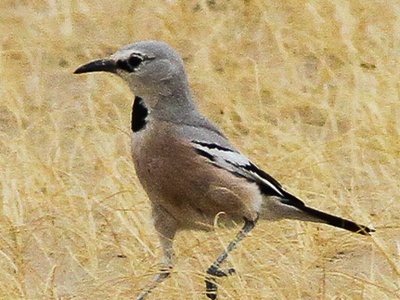
Pander’s Ground Jay
A charismatic desert specialist, this sandy-colored corvid is a must-see. Look for its distinctive black bib and curved bill as it hops across the arid landscapes of the Kyzylkum Desert. It’s often found near saxaul bushes, its primary habitat.
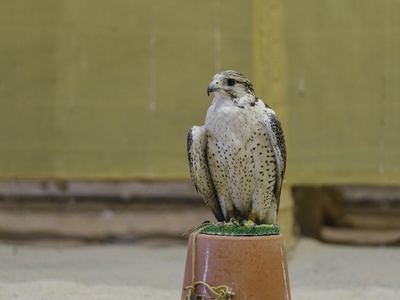
Saker Falcon
A large, powerful falcon revered in Central Asian culture. This formidable hunter can be seen year-round in open country, often perched on utility poles or soaring high. Its numbers are bolstered by wintering birds from the north, making it more visible then.
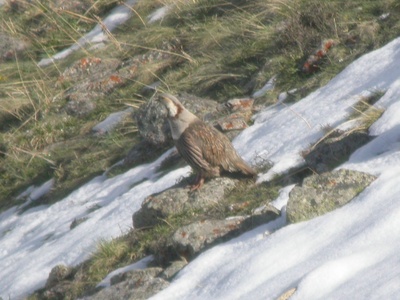
Himalayan Snowcock
A massive, beautifully patterned mountain partridge. Its piercing whistles echo across the high peaks of the Western Tien Shan. Seeing this bird requires an early morning trek into steep, rocky terrain above 3,000 meters, but the reward is unforgettable.

Ibisbill
An extraordinary and unique wader, the sole member of its family. With its long, decurved red bill and striking face pattern, it is unmistakable. Search for it along the gravel beds of pristine mountain rivers in the Gissar and Tien Shan ranges.
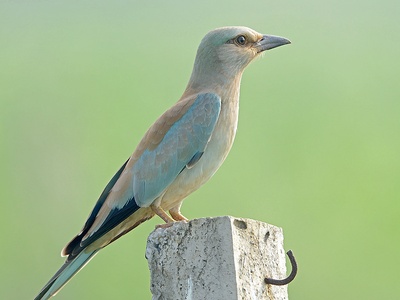
European Roller
A flash of brilliant turquoise and blue, this stunning bird is a common summer visitor. It’s often seen perched conspicuously on wires or branches, from which it sallies forth to catch large insects. Arrives in spring and departs for Africa in early autumn.

White-winged Woodpecker
Central Asia’s answer to the Great Spotted Woodpecker, distinguished by its large white wing panel. This resident is a specialist of “tugai” riverine forests and can also be found in mature orchards and parks. Listen for its sharp calls and drumming.
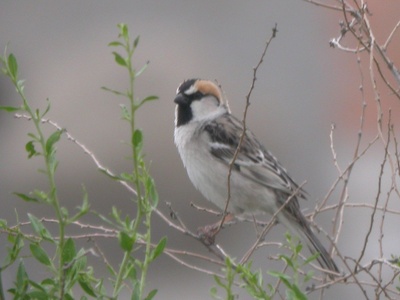
Saxaul Sparrow
A handsome desert sparrow, closely tied to saxaul trees for nesting and shelter. The male’s bold black and grey head pattern is distinctive. This is a key target for birders visiting the Kyzylkum Desert, often found in small, active flocks.
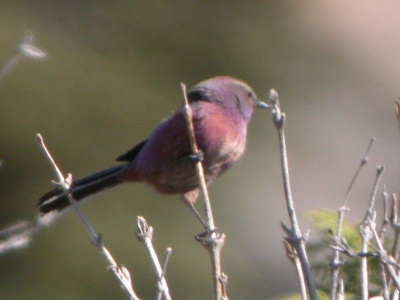
White-browed Tit-Warbler
A tiny, jewel-like bird of the high mountains. The male is a stunning mix of lilac, blue, and rufous. Look for this energetic gem flitting through juniper bushes in the upper reaches of the Tien Shan, often in family parties.

Macqueen’s Bustard
A large, cryptic ground bird known for the male’s spectacular courtship display. This shy bustard is a scarce visitor to the deserts and steppes of Uzbekistan. Its excellent camouflage makes it very difficult to spot on the arid plains.

White-headed Duck
A globally threatened diving duck with a stiff tail and, in males, a striking white head and bright blue bill. Aydarkul Lake is a key wintering site where hundreds can sometimes be seen, a crucial sight for conservationists.

Pallas’s Gull
One of the world’s largest and most impressive gulls, with a jet-black hood in breeding plumage. It’s a common winter visitor to major water bodies like Aydarkul Lake, where its powerful presence and deep calls make it a standout among other gulls.
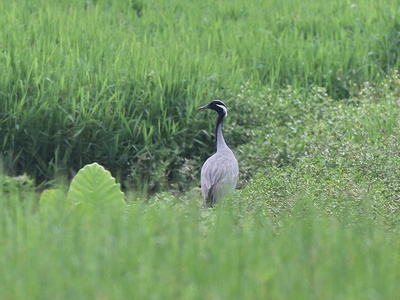
Demoiselle Crane
The world’s smallest crane, elegant and graceful with long black neck plumes. Vast, noisy flocks pass through Uzbekistan during spring and autumn migration, a truly spectacular natural event. They often stop to rest in steppes and wetlands.
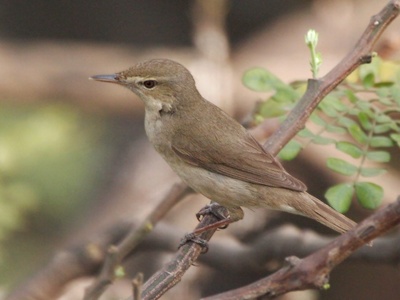
Sykes’s Warbler
A plain, pale warbler that can be tricky to identify. Best located by its fast, chattering song delivered from the top of a bush. It’s a common summer breeder in arid scrublands and riverine thickets throughout the lowlands of Uzbekistan.

Desert Finch
A subtly beautiful, pale finch with a stout black bill and distinctive pink flashes on its wings. Often found in flocks near water sources in desert oases or even in city parks and gardens, especially in winter.

White Stork
A large, iconic bird famous for nesting on man-made structures. Common in summer, especially in the Fergana Valley and near Bukhara, where their huge stick nests on pylons and rooftops are a familiar and welcome sight. They migrate to Africa for the winter.

European Bee-eater
A dazzlingly colourful bird with a graceful flight and a liquid, “prruup” call. They arrive in spring to breed colonially in sandy banks. Look for them hawking insects from wires or gathered in chattering flocks, a vibrant sign of summer.

Pallid Harrier
An elegant, ghostly-pale raptor that glides low over open ground while hunting. Males are almost white, while females are brown. A regular sight during migration periods across the steppes, with some staying for the winter in the south.
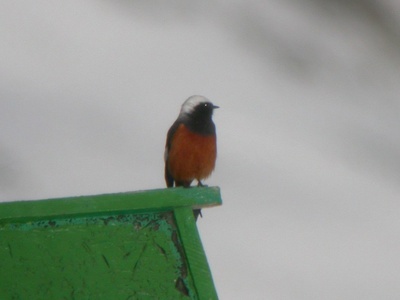
Güldenstädt’s Redstart
A spectacular mountain bird. The male has a jet-black back, white crown, and fiery orange underparts. It breeds in the highest alpine zones and descends to lower elevations with sea-buckthorn bushes in winter, making it more accessible to see.
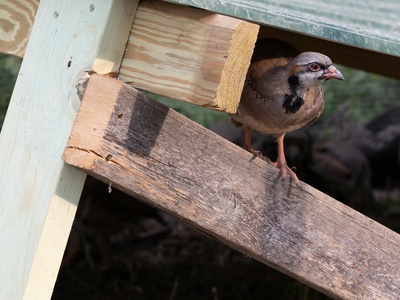
Chukar
A chunky, well-camouflaged partridge with bold barring on its flanks and a black “necklace.” Its loud, chuckling call is a characteristic sound of Uzbekistan’s foothills and mountains. Often seen in coveys, running uphill when disturbed.
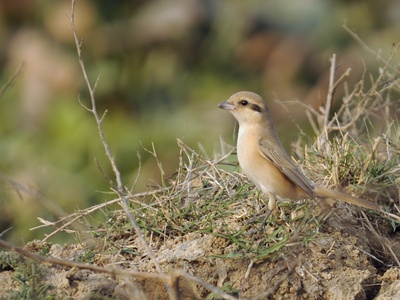
Isabelline Shrike
A typical shrike of arid regions, sandy-brown overall. It perches conspicuously on bushes, scanning for prey like a true “butcher-bird.” A very common and widespread migrant, with some populations breeding in the country’s scrublands.

Sociable Lapwing
A critically endangered wader that passes through Uzbekistan on migration. Its striking head pattern and sociable nature are distinctive. Sighting this species is a rare privilege, usually in small flocks on the steppe on their way to wintering grounds.

Pygmy Cormorant
A small, dark cormorant, often seen in flocks. It prefers freshwater wetlands with dense vegetation. Its populations in Uzbekistan have increased, and it can be found year-round in suitable habitats like the Amu Darya delta and large lake systems.
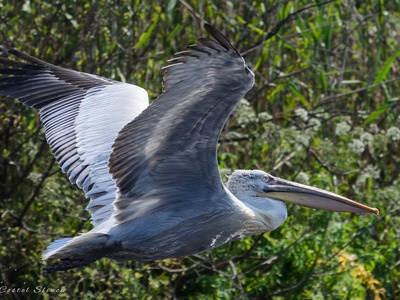
Dalmatian Pelican
A massive, silvery-white pelican, the largest freshwater bird in the world. Distinguished by its shaggy crest and greyish plumage. Important numbers winter at Aydarkul Lake, offering a majestic wildlife spectacle.
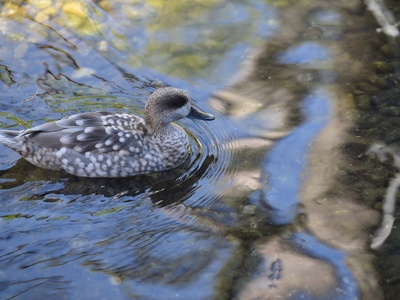
Marbled Duck
A subtly patterned, globally threatened duck. Its speckled pale-brown plumage and dark eye-patch are key features. Uzbekistan’s wetlands are an important stronghold for this species, found in quiet, reed-fringed pools.
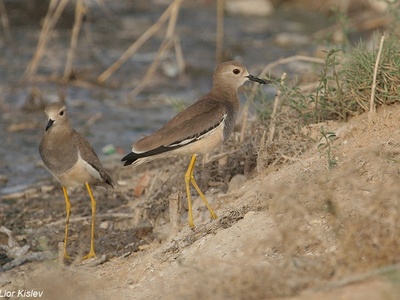
White-tailed Lapwing
An elegant, long-legged wader with a distinctive pure white tail. It is a common summer breeder around many of Uzbekistan’s wetlands and irrigated areas. Its loud, piping calls are a frequent sound near freshwater marshes from spring to autumn.
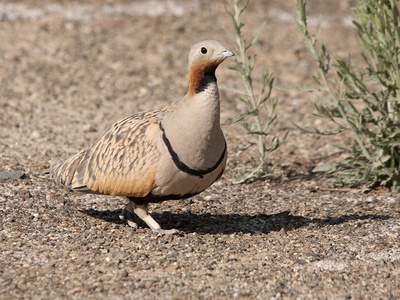
Black-bellied Sandgrouse
A stocky, pigeon-like desert bird, known for its fast, direct flight. Males have a striking black belly. They are famous for flying long distances to waterholes in the morning, where large flocks gather, providing a classic desert spectacle.
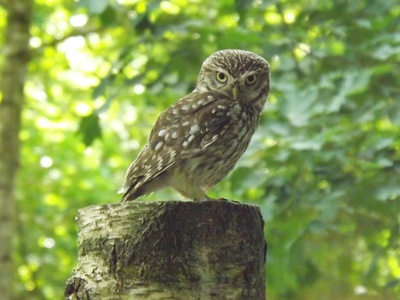
Little Owl
A small, fierce-looking owl with bright yellow eyes, often active during the day. This adaptable owl is common and widespread throughout Uzbekistan’s lowlands, and its bobbing demeanor when perched on rocks or buildings makes it a charismatic find.
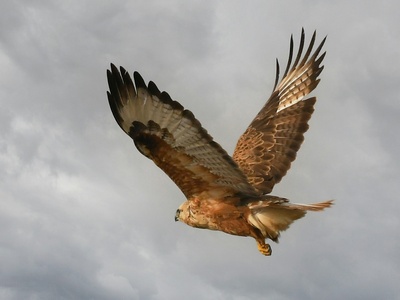
Long-legged Buzzard
A large, pale buzzard, well-adapted to arid environments. It’s the most common large raptor in Uzbekistan’s open landscapes. Look for it soaring on broad wings or perched on telegraph poles, scanning the ground for rodents.

Egyptian Vulture
A small, striking white vulture with black flight feathers and a bare yellow face. This endangered species returns to Uzbekistan in spring to nest on remote cliffs. Often seen soaring over mountain ranges or scavenging near human settlements.
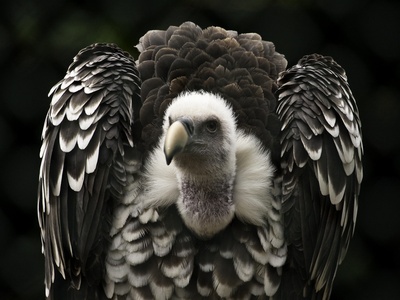
Griffon Vulture
A huge, classic vulture with a pale body and a distinctive ruff of white feathers. It nests colonially on cliffs in the Gissar and Tien Shan mountains. Seeing a group of these giants soaring effortlessly is an awe-inspiring sight.

Lammergeier
Also known as the Bearded Vulture, this is a spectacular and unique bird of prey with a diamond-shaped tail. Famous for dropping bones from a height to crack them open, it soars majestically along high mountain ridges. A true icon of the high peaks.

Steppe Eagle
A large, dark brown eagle that is an iconic bird of the Central Asian steppes. Huge numbers pass through Uzbekistan during spring and autumn migration, creating one of the world’s great raptor migration spectacles.
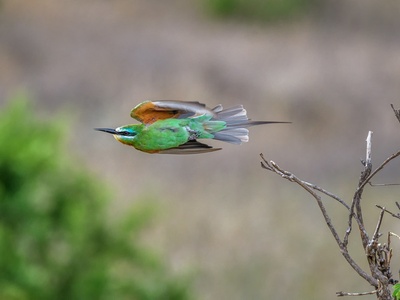
Blue-cheeked Bee-eater
A large, predominantly green bee-eater with a blue “cheek” and long central tail streamers. It breeds in colonies near water, often alongside European Bee-eaters. Its rich, liquid calls are a characteristic sound of wetlands in summer.
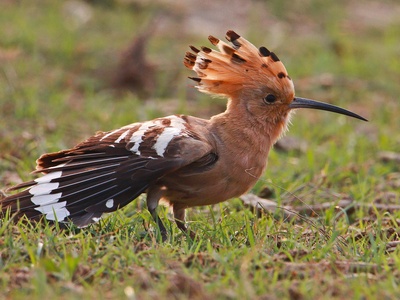
Hoopoe
An unmistakable bird with sandy-pink plumage and a huge erectile crest. Its soft, repetitive “oop-oop-oop” call is a herald of spring. A very common and widespread summer visitor found foraging on lawns and in open fields across the country.

Turkestan Tit
The Central Asian counterpart to the Great Tit, with a paler grey back and less yellow. A common resident of tugai forests, it has also adapted well to city parks and gardens, where it is a familiar sight and sound.

Yellow-breasted Tit
A beautiful tit combining the patterns of a Blue Tit and an Azure Tit, with a distinct yellow breast. Found in deciduous mountain forests and tugai woodlands. This subspecies is a particularly colorful and sought-after bird for visitors.

Rufous-tailed Scrub Robin
An elegant, long-tailed bird, often seen perched with its tail cocked. When fanned, the bright rufous tail with black-and-white tips is spectacular. A common summer visitor, its melodic song is a feature of scrubby habitats.
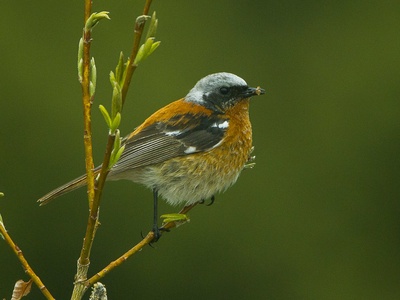
Eversmann’s Redstart
A handsome redstart. The breeding male has a grey crown, black face, and orange-rufous back. It breeds in high mountains to the north and east, and is a fairly common winter visitor to Uzbekistan’s foothills and woodlands.
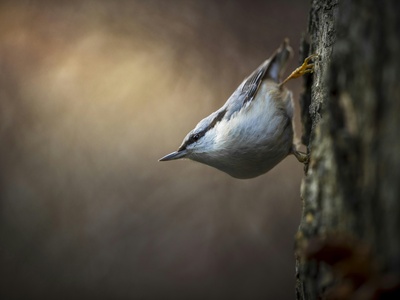
Hume’s Warbler
Very similar to the Yellow-browed Warbler but duller, with a distinct two-note call often transcribed as “dzee-swee.” A common passage migrant and winter visitor, replacing other leaf warblers in the colder months in parks and woodlands.
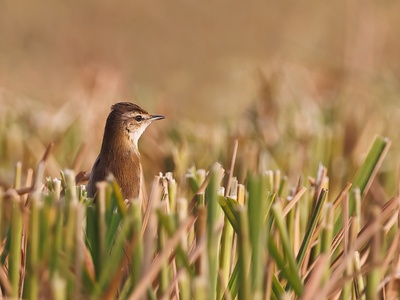
Paddyfield Warbler
A small, warm-brown reed warbler with a prominent pale eyebrow. A very common summer breeder in reedbeds across the country. Its fast, chattering, and repetitive song is one of the most characteristic sounds of Uzbekistan’s wetlands from spring onwards.
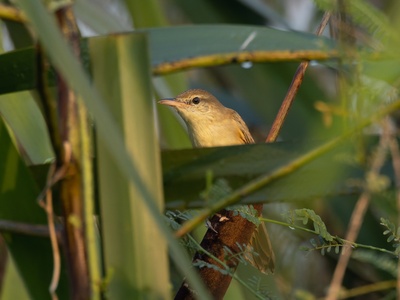
Clamorous Reed Warbler
A large, robust reed warbler with a powerful, loud, and somewhat harsh song. Unlike most of its relatives, it is a resident in Uzbekistan, found year-round in the vast reedbeds of the country’s major lake systems. A true wetland specialist.

Red-headed Bunting
A vibrant and colourful bunting. The male’s bright yellow body and brick-red head make it unmistakable. A common summer visitor, often seen singing from telephone wires or bushes in open agricultural landscapes.

Rock Bunting
A handsome bunting with a striking grey head patterned with black stripes. It is a common resident of rocky, scrubby hillsides in the mountain ranges of Uzbekistan. Its simple, metallic song is a typical sound of these habitats.

Crested Lark
A common and familiar lark, easily identified by its prominent spiky crest. It is found in a wide variety of open, dry habitats, often near human settlements. Its pleasant, whistling song is a familiar sound throughout the lowlands year-round.

Citrine Wagtail
A striking wagtail, the breeding male has a brilliant yellow head and underparts. It breeds in high-altitude wet meadows and is a very common passage migrant through the lowlands, where it can be seen foraging along the edges of water bodies.
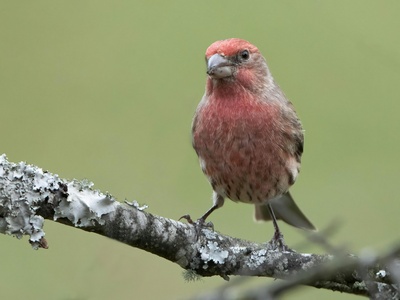
Rosy Starling
A beautiful pink and black starling that forms huge, noisy flocks. It is a colonial breeder, nesting in rock crevices, and is famous for descending in vast numbers to feed on locusts. A spectacular, if erratic, summer visitor.
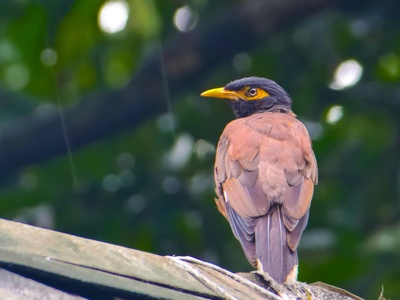
Common Myna
A bold and highly adaptable bird, now ubiquitous in human-dominated landscapes across Uzbekistan. Its confident strut, varied calls, and yellow eye-patch are familiar to everyone. Originally from South Asia, it has spread dramatically.
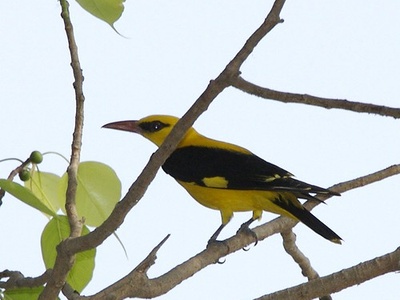
Eurasian Golden Oriole
A shy and hard-to-see bird, despite the male’s stunning golden-yellow plumage. Its presence is usually given away by its beautiful, fluting song echoing from the canopy of tall trees. A widespread summer visitor to wooded areas.

Black-billed Magpie
An intelligent and resourceful corvid, its loud chatter and bold black-and-white plumage are unmistakable. Extremely common and widespread in almost all habitats except the densest forests and most extreme deserts. A familiar sight everywhere.
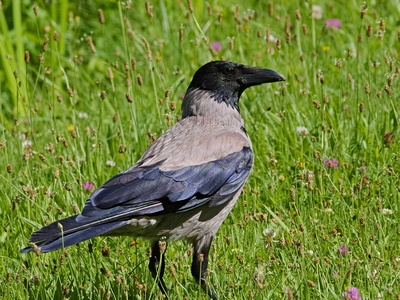
Hooded Crow
A common and clever crow with a distinctive grey body and black head, wings, and tail. Widespread in agricultural landscapes and increasingly common in cities. Its intelligence and adaptability allow it to thrive alongside people.

Rook
A sociable, glossy black crow, distinguished by the bare skin at the base of its bill in adults. Forms large nesting colonies (“rookeries”) and huge winter roosts. Abundant in agricultural landscapes, often in vast flocks.

House Sparrow
Inextricably linked with human settlements, this is arguably the most familiar bird in Uzbekistan. Found everywhere people live, from the largest cities to the smallest desert outposts. Its cheerful chirps are a constant background sound.
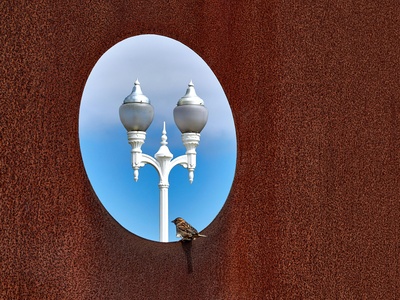
Spanish Sparrow
Similar to the House Sparrow, but the male has a chestnut crown and heavily streaked black breast. It often forms huge, noisy breeding colonies in trees, especially near water. Abundant in rural areas, sometimes in mixed flocks.

Rock Sparrow
A drab, streaky sparrow, best identified by its strong bill and a small, often hidden, yellow spot on its throat. It nests in rock crevices or old buildings and has a noisy, repetitive call. Common in mountainous terrain.
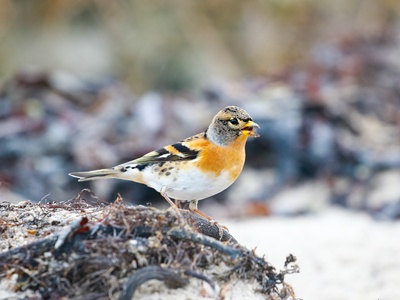
Brambling
The northern counterpart to the Chaffinch. The male in winter has a mottled black head and a bright orange breast and shoulder patch. A fairly common winter visitor, often found in mixed flocks in foothill woodlands and fields.
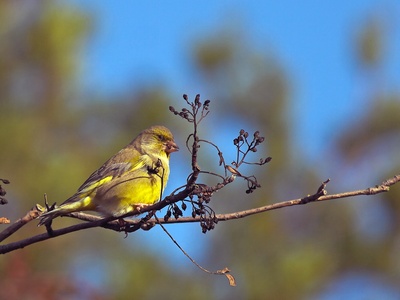
Greenfinch
A stocky, greenish finch with a heavy bill and bright yellow flashes on its wings and tail. Its wheezy, twittering song is a common sound in wooded areas, including city parks and gardens, where it is a year-round resident.
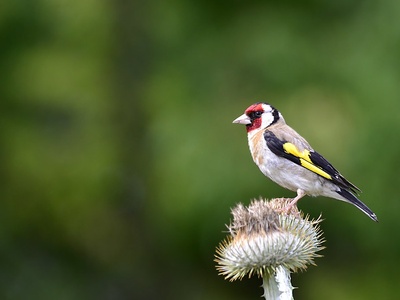
European Goldfinch
A beautiful and familiar finch with a red, white, and black face and bright yellow wing-bars. Often seen in twittering flocks, called “charms,” feeding on thistle seeds. A common resident in a variety of semi-open habitats.

Hawfinch
A large, powerful, and shy finch with a massive bill capable of cracking cherry stones. Its striking pattern and bull-necked appearance are unique. A scarce resident and more widespread winter visitor in mature woodlands.

Great Cormorant
A large, dark waterbird, often seen perched on posts or trees with its wings spread out to dry. Very common on all major water bodies in Uzbekistan, where it hunts for fish. Its numbers swell with wintering birds from the north.

Great Crested Grebe
An elegant waterbird famous for its elaborate courtship “weed dance.” In breeding plumage, it has spectacular head plumes. A common sight on lakes like Aydarkul, where it breeds and its population increases with winter visitors.

Black-necked Grebe
A small grebe with a striking breeding plumage of black and gold, and a ruby-red eye. It breeds colonially on well-vegetated wetlands and is a common passage migrant. In winter, it is a much drabber grey and white.
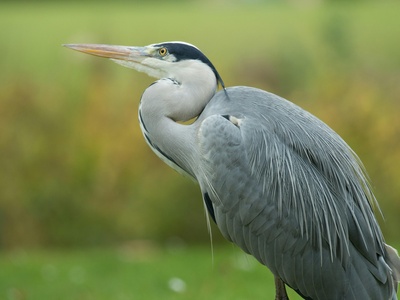
Grey Heron
A large, stately heron, a familiar sight standing motionless in the shallows as it stalks fish and amphibians. Very common and widespread throughout Uzbekistan, present year-round wherever there is water with suitable foraging habitat.
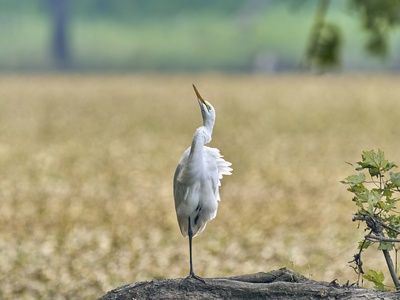
Great Egret
A large, graceful, all-white heron with a yellow bill and blackish legs. A common and conspicuous bird of wetlands across the country, often seen hunting in shallow water. Its size makes it stand out from other white egrets.
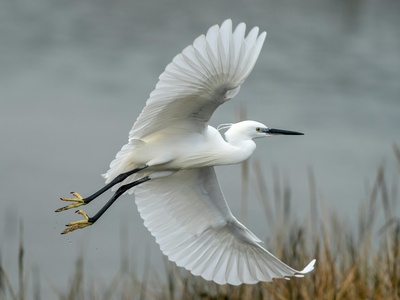
Little Egret
A small, delicate white heron with a slender black bill, black legs, and distinctive yellow feet (“golden slippers”). A common sight in the wetlands of Uzbekistan, especially in summer. Some populations may be resident in the south.

Cattle Egret
A small, stocky white heron, often found foraging alongside livestock, picking off insects they disturb. In breeding plumage, it develops buff-orange plumes on its head and chest. A colonial breeder, common in summer in agricultural areas.

Black-crowned Night Heron
A stocky, short-legged heron that is primarily active at dawn and dusk. Adults are handsome with a black back and cap, grey wings, and white underparts. It roosts colonially in trees during the day, often hidden from view.

Eurasian Spoonbill
An unmistakable large white waterbird with a long, flattened, spoon-shaped bill. It feeds by sweeping its bill from side to side through the water. Breeds colonially in reedbeds and is a common sight in wetlands during migration.
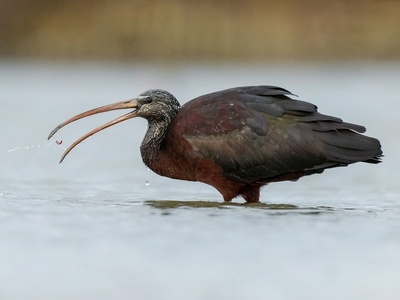
Glossy Ibis
A medium-sized, dark waterbird that appears black from a distance but shows beautiful bronze and purple iridescence up close. It breeds in colonies in wetlands and can be seen in large flocks during migration, flying in V-formations.
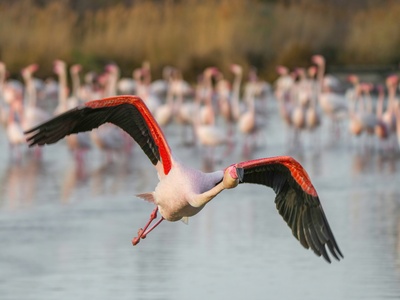
Greater Flamingo
An iconic, unmistakable bird. While it doesn’t breed regularly in Uzbekistan, large flocks are often seen during migration and in summer at saline lakes like Aydarkul, creating a stunning pink spectacle against the blue water.

Whooper Swan
A large white swan with a distinctive yellow and black bill pattern, holding its neck straight. Its loud, bugling calls are very evocative. A common winter visitor to Uzbekistan’s large, ice-free water bodies, often arriving in large family groups.
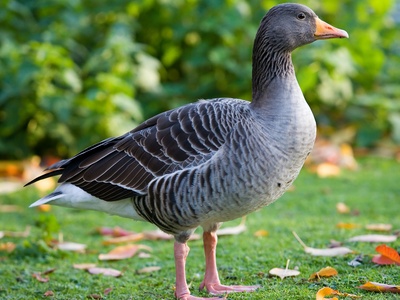
Greylag Goose
A large, bulky grey goose with a bright orange bill and pink legs. It is the ancestor of most domestic geese. Abundant during winter and migration, often forming huge flocks that feed in fields and roost on large lakes.

Ruddy Shelduck
A striking, bright orange-brown duck-like bird with a pale head. It is a common and widespread species, found near a variety of water bodies. Often seen in pairs or family groups, and its honking calls are frequently heard.

Common Shelduck
A large, boldly-patterned goose-like duck, with a white body, dark green head, and a broad chestnut band across its chest. Common on brackish and saline lakes, where it nests in burrows. The male has a prominent red knob on his bill.
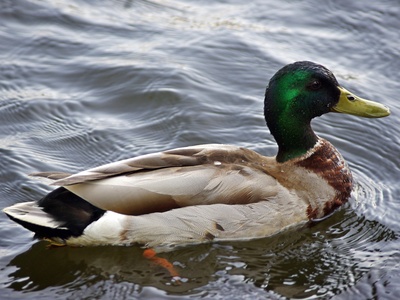
Mallard
The familiar “green-headed” duck, ancestor of most domestic ducks. The male is unmistakable, while the female is a mottled brown. Extremely common and widespread in Uzbekistan, present on virtually every pond, lake, and river.
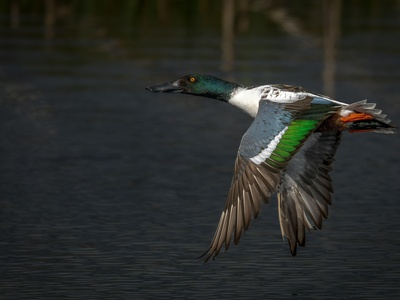
Northern Shoveler
Instantly recognizable by its huge, spatulate bill, which it uses to filter food from the water’s surface. The male is brightly coloured with a green head, white breast, and chestnut flanks. Common on shallow lakes and marshes.
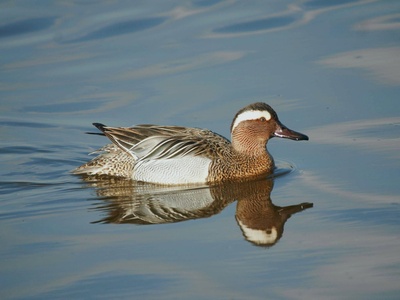
Garganey
A small, attractive dabbling duck. The male has a striking white crescent over its eye. It is a very common passage migrant, and a fairly common breeder in well-vegetated wetlands. One of the earliest migrants to return in spring.
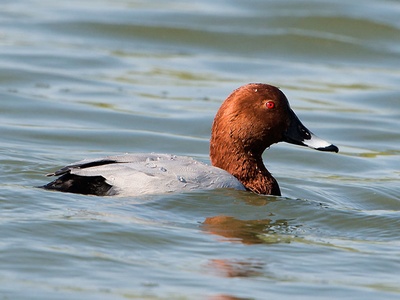
Common Pochard
A medium-sized diving duck. The male has a rusty-red head, black breast, and pale grey body. It is a common breeder and an abundant winter visitor on large lakes and reservoirs like Aydarkul, often forming large rafts.

Ferruginous Duck
A rich, dark chestnut diving duck with a contrasting white undertail and a striking white eye in males. This globally near-threatened species is a fairly common breeder in secluded, reed-fringed ponds in Uzbekistan.

Tufted Duck
A compact diving duck. The male is a crisp black-and-white with a drooping crest and a bright yellow eye. A very common winter visitor, often forming large rafts on open water bodies throughout the country.
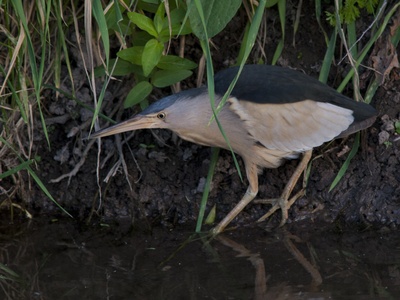
Little Bittern
A very small, extremely secretive heron. The male has a black cap and back contrasting with buffy wing panels. It is a master of camouflage, often “freezing” with its bill pointed skywards. Best seen in flight over reedbeds at dawn or dusk.

Squacco Heron
A small, stocky, buff-coloured heron that appears surprisingly white in flight due to its pure white wings and tail. A common summer visitor to the wetlands of Uzbekistan, where it breeds colonially in mixed-species heronries.

Pheasant-tailed Jacana
A stunningly elegant tropical wader, with an extremely long tail in breeding plumage. A very rare vagrant to Uzbekistan from its usual range in South and Southeast Asia. Any sighting is a major event for the country’s birding community.
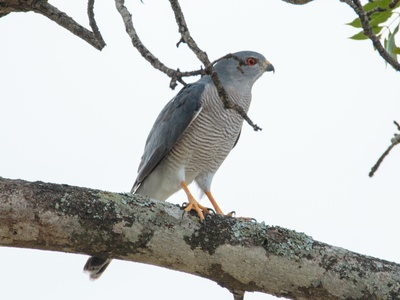
Shikra
A small, fierce bird of prey with grey upperparts and fine rufous barring below. A common summer visitor, it is surprisingly bold and can be found hunting small birds and lizards even in the green spaces of cities like Tashkent and Samarkand.
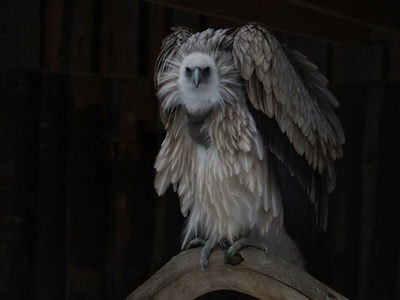
Himalayan Vulture
One of the largest and heaviest flying birds in the world, even bigger than the Griffon Vulture. It is very pale, almost white. Found at the highest altitudes in the Tien Shan mountains, often soaring over peaks above 3,000 meters.

Eastern Imperial Eagle
A massive, dark eagle with a pale golden crown and nape. This globally vulnerable species is a scarce but regular migrant and winter visitor to the steppes and open country of Uzbekistan. Often seen perched on the ground or on low posts.
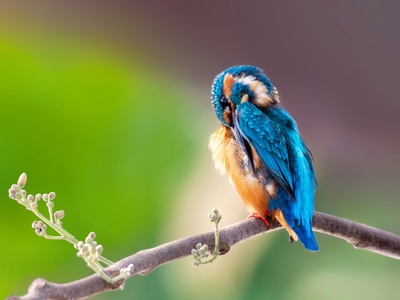
Common Kingfisher
A flash of brilliant blue and orange, this small jewel of a bird is a delight to see. It hunts small fish by diving from a low perch. Found year-round along slow-moving water bodies with clear water and suitable banks for nesting.

Greenish Warbler
A small, active, and rather nondescript leaf warbler, best identified by its call. It is an extremely abundant passage migrant throughout Uzbekistan in spring and autumn, flitting through the foliage of almost any tree or bush as it travels.

Ménétries’s Warbler
A small, dark-headed warbler. The male has a blackish head, white moustache stripe, and pinkish underparts. A fairly common but secretive breeder in arid scrub, best located by its rattling song from deep cover.
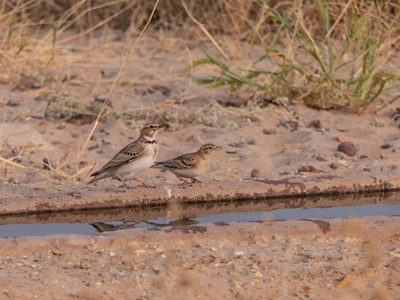
Bimaculated Lark
A large, robust lark with a strong bill and distinctive black patches on the sides of its breast. It passes through Uzbekistan in large numbers during migration, sometimes forming huge flocks in the steppes and agricultural fields.
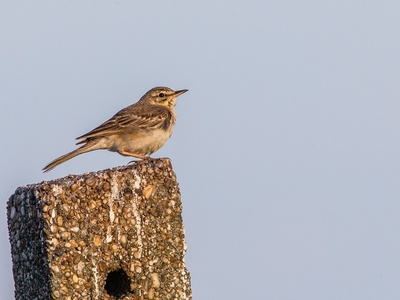
Tawny Pipit
A large, pale, and rather featureless pipit of arid environments. Its plain appearance is a good field mark. A common summer breeder in the dry, open landscapes of Uzbekistan, and a very common migrant.

Carrion Crow
The all-black crow of the region (ssp. orientalis). It is common in many parts of Uzbekistan, often overlapping with Hooded Crows. It is distinguished from the Rook by its fully feathered face and heavier bill. A typical crow of the countryside.
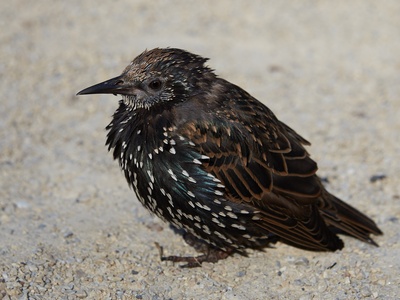
Common Starling
A familiar, glossy, and speckled bird known for its mimicry and for forming massive, swirling flocks (murmurations) in winter. Very common throughout Uzbekistan, especially in agricultural areas and urban centers.

Chaffinch
A common finch in Europe, but in Uzbekistan, it is primarily a winter visitor and passage migrant. The male is colourful with a blue-grey crown and pinkish breast. Flocks can be found in woodlands and parks during the colder months.
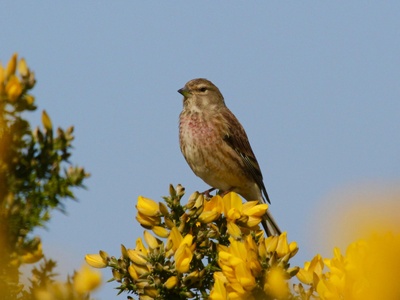
Linnet
A small, streaky brown finch. The breeding male has a distinctive crimson patch on its forehead and breast. It forms large flocks in winter, feeding on seeds in weedy fields. A common bird of open, scrubby landscapes.
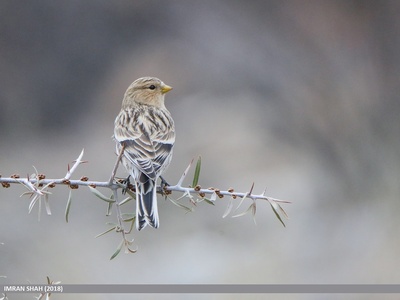
Twite
A small, brown, and heavily streaked finch, similar to a Linnet but with a stubby yellow bill in winter. The “Steppe” Twite subspecies is a common winter visitor to the arid plains and foothills of Uzbekistan.

Caspian Tit
A large, robust tit with a brownish-grey back and a large black bib. It is a resident of the western mountain ranges. It has a distinctive, rather harsh call. A specialty of the region, sought after by visiting birders.

Gadwall
A subtly beautiful dabbling duck. The male is intricately patterned in grey and black, with a distinctive black rear end and a white patch on the wing visible in flight. A common and widespread duck, found in vegetated wetlands.
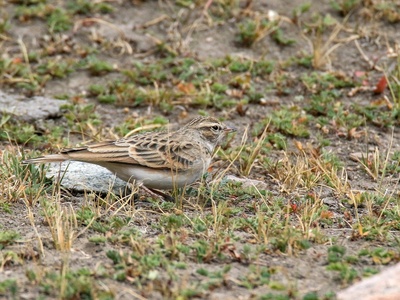
Hume’s Lark
A typical small, brown lark that can be difficult to identify. It breeds in the high-altitude grassy steppes of the mountain ranges. Best found in summer by its pleasant, melodic song, often delivered in a hovering song-flight.

Oriental Skylark
Very similar to the Eurasian Skylark but slightly smaller. It is known for its spectacular, sustained song-flight, where it hovers high in the air, pouring out a continuous stream of melodious notes. Widespread in suitable open habitats.

Asian Dowitcher
A large, long-billed wader resembling a godwit. This globally near-threatened species is a rare passage migrant through Central Asia. Finding one amongst flocks of other waders at a key stopover site would be a significant discovery.
